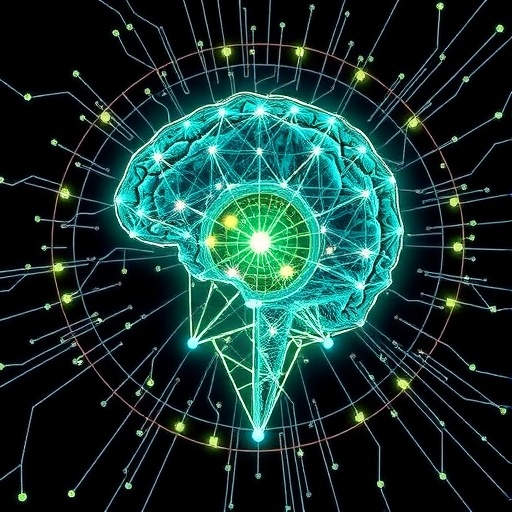Recent advancements in quantum machine learning and big data analytics are transforming the landscape of health biomechanics, particularly within the demographic of college students. A groundbreaking study led by Liu in 2025 has pointed to significant changes in the physical fitness paradigms of this population, guided by a nuanced understanding of biomechanical parameters. His research, published in Discover Artificial Intelligence, illuminates the invaluable intersections between technology and physical health, emphasizing the need for innovative analyses to enhance fitness outcomes among young adults.
The primary focus of Liu’s study is on the intricate dynamics of how college students’ health biomechanics are influenced by various factors, all of which can now be elucidated using quantum ML algorithms. This fresh approach allows scientists to analyze vast amounts of physical fitness testing data in ways that were previously unfeasible. By harnessing the power of quantum physics and algorithms, Liu’s research not only provides deeper insights but also paves the way for future explorations into health and physical education.
To begin with, the study used extensive datasets gathered from fitness tests across numerous college campuses. These tests included evaluations of strength, agility, flexibility, and endurance, capturing a holistic view of student health. By applying quantum ML, Liu was able to process this data at unprecedented speeds, which revealed correlations and trends that traditional statistical methodologies may not have uncovered. This represents a significant shift in how educational institutions and health departments can approach fitness programs.
The data analysis revealed considerable variations in biomechanics, particularly across different ethnic groups, genders, and fitness levels. With these factors influencing the biomechanics of movement, Liu’s research underscores the importance of personalized fitness programs that cater to the unique requirements of diverse student populations. This implies that blanket fitness regimens may not be effective, urging colleges to adopt more tailored strategies to improve student well-being.
Furthermore, Liu’s findings suggest a compelling connection between biomechanical efficiency and mental health amongst college students. The pressures of academic life often lead to significant stress, which can adversely affect physical performance. Thus, integrating fitness programs that consider both biomechanical and psychological factors can support holistic student health, boosting their overall educational experience.
The implications of these findings extend beyond mere academic interest; they highlight the crucial need for policy changes within educational institutions. Considering the prevalent health issues among college students, such as obesity and mental health disorders, adopting Liu’s recommendations may foster environments that prioritize physical wellness. By leveraging big data, administrators can actively design initiatives that adapt to student needs, ultimately encouraging healthier lifestyles.
In addition to the academic and administrative aspects, Liu’s research raises important questions about the role of technology in health education. With the rise of big data and quantum machine learning, we stand at the cusp of a revolution in how students engage with health instruction. The insights generated from this study could facilitate the creation of interactive applications that personalize health tracking and fitness coaching, thus engaging students on a more dynamic level.
Moreover, there lies a significant industry aspect to Liu’s research. The fitness tech market is expanding rapidly, with startups aiming to develop solutions driven by AI and machine learning. These innovations promise to enhance user experiences, making fitness tracking more intuitive and effective. Liu’s research could serve as a benchmark for companies looking to align their products with the actual health biomechanics of their target demographic.
In terms of societal impact, this study resonates with broader public health initiatives. With rising concerns over youth health, it’s essential to equip students with the tools and knowledge necessary to make informed decisions regarding their fitness. Liu’s findings could guide community programs that combine educational resources with physical training, fostering a culture of wellness among young individuals.
As we further delve into the implications of Liu’s research, it becomes increasingly clear that the intersection of quantum technologies and health science will shape future paradigms in health education. The transitions toward a more quantitative understanding of biomechanics reflect larger trends in how we perceive data in general. The capacity to analyze this data now allows us to revolutionize physical education, creating standards and guidelines that can adapt to evolving student needs.
Looking forward, Liu advocates for continued research in this area, emphasizing the potential that exists within the realms of artificial intelligence and biotechnology. By integrating interdisciplinary studies, scholars can uncover new methodologies that enhance the accuracy of biomechanical assessments, ultimately leading to better health outcomes. Researchers are encouraged to experiment with innovative frameworks that blend traditional exercise science with the burgeoning field of quantum computing.
In closing, the pioneering efforts of Liu in exploring the health biomechanics of college students not only challenge existing paradigms but also invite further inquiry into how emerging technologies can be harnessed for the collective good. The momentum generated by his findings offers a glimpse of a future where data-driven approaches fundamentally transform student health, making physical fitness an accessible priority for all. As educational institutions embrace this shift, it can potentially lead to a generation of college students who are not just academically successful, but also physically and mentally thriving.
The collaborative potential within academia, industry, and technology is immense, and Liu’s research hints at the exciting possibilities that lie ahead. By continuing to explore and invest in the relationships between biomechanics and data analysis, society can cultivate environments where student wellness is a fundamental component of higher education.
Subject of Research: Health biomechanics of college students
Article Title: The changes in health biomechanics of college students based on quantum ML and big data analysis of physical fitness testing.
Article References:
Liu, G. The changes in health biomechanics of college students based on quantum ML and big data analysis of physical fitness testing.
Discov Artif Intell 5, 259 (2025). https://doi.org/10.1007/s44163-025-00489-1
Image Credits: AI Generated
DOI: 10.1007/s44163-025-00489-1
Keywords: Health biomechanics, quantum machine learning, big data analysis, physical fitness testing, college students.




